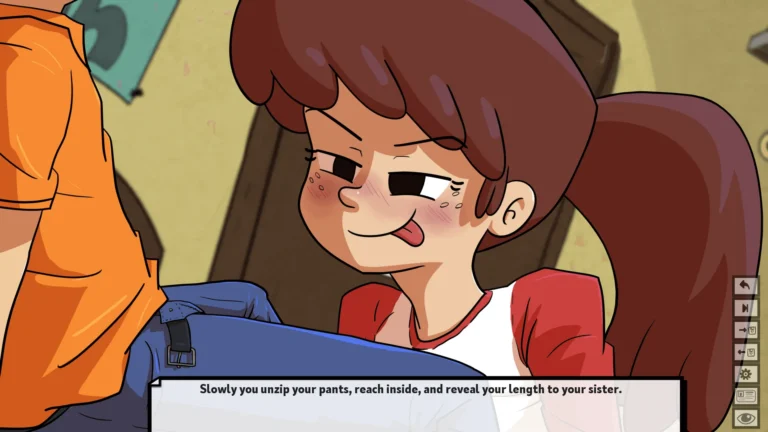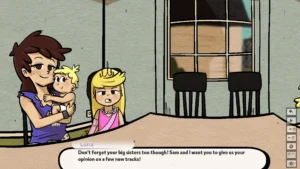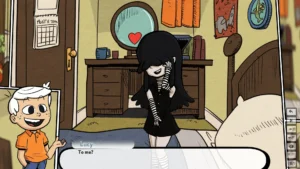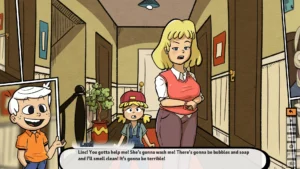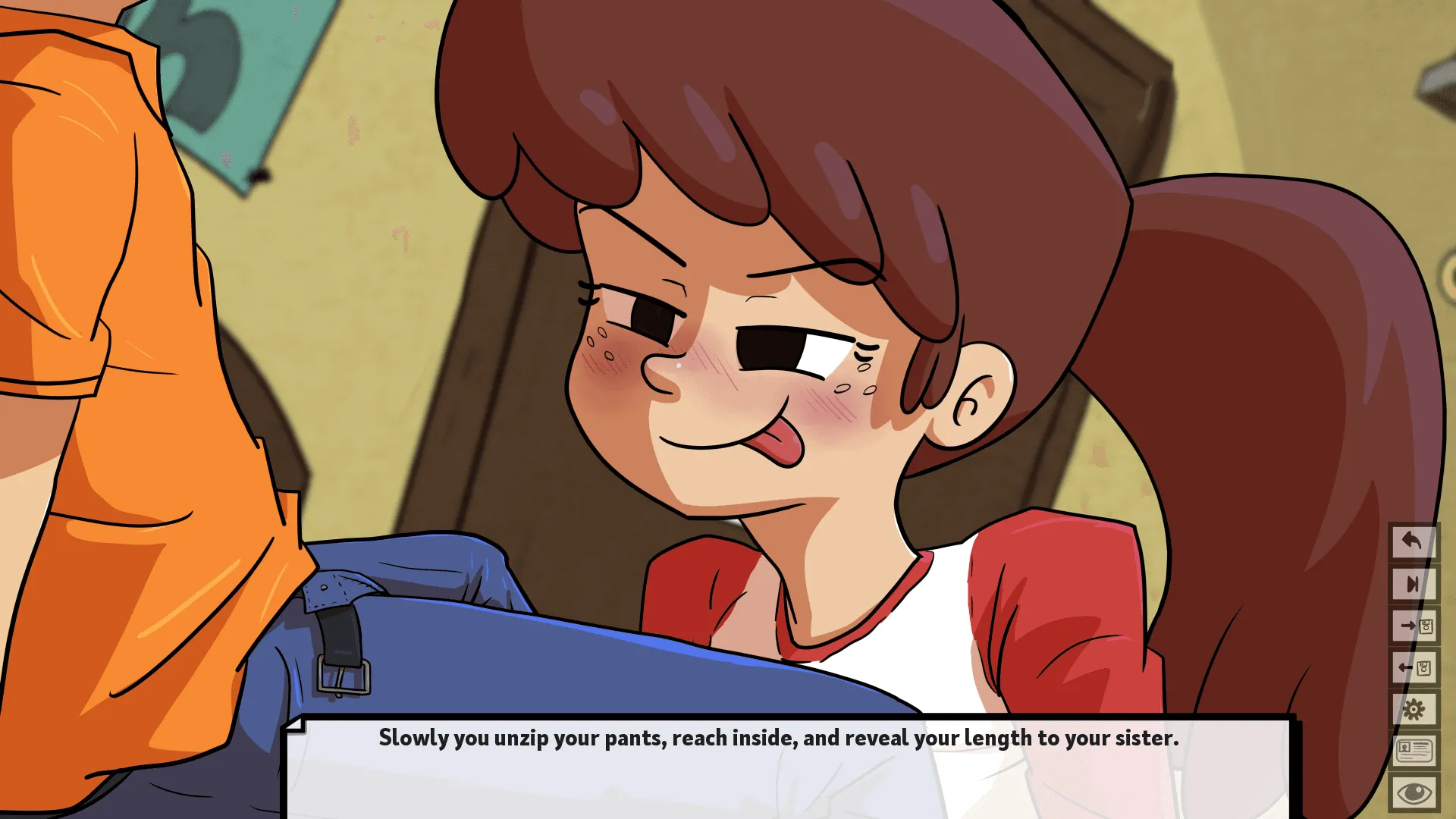
The Lewdest House
Play The Lewdest House
The Lewdest House review
A candid look at gameplay mechanics, mature themes, and community reactions
When a beloved cartoon universe collides with mature themes, the result is often as intriguing as it is controversial. ‘The Lewdest House’ has emerged as one of gaming’s most talked-about fan creations, blending nostalgic character designs with choice-driven storytelling that pushes boundaries. This deep dive examines what makes this game simultaneously captivating and contentious, exploring how it reimagines familiar characters while navigating complex moderation challenges.
Gameplay Dynamics and Narrative Structure
Choice-Driven Storytelling Mechanics
Picture this: You’re playing The Lewdest House, and Lincoln’s fate rests on whether you choose to help his sister fix her laptop or binge-watch a show with another. 🎮💥 One click sends ripples through the game’s branching narrative choices, reshaping relationships, unlocking secret scenes, or even locking you out of entire storylines. It’s like a choose-your-own-adventure book, but with way more drama (and questionable life decisions).
The game’s core appeal lies in its branching narrative choices that force players to weigh short-term rewards against long-term consequences. Want to sneak out for a late-night drive? That might boost your bond with one sister but tank your reputation with another. 🚗💔 Developers baked in over 300 decision points, creating a web of possibilities that makes replayability addicting—though some fans argue it’s too easy to accidentally trigger a “bad ending” by picking the wrong emoji response. 😬
Here’s the kicker: Your choices don’t just alter dialogue—they rewrite character development arcs. For example, neglecting Lincoln’s academic responsibilities to prioritize family bonding could lead to a heartfelt reconciliation… or a spectacular meltdown during finals week. 🏫🔥 The lack of a “reset” button means every choice sticks, turning casual players into overthinkers.
| Feature | v0.2.1 | v0.2.7 |
|---|---|---|
| Dialogue Options | 120 | 320+ |
| Endings | 4 | 12 |
| Relationship Metrics | Basic affinity | Layered trust/loyalty stats |
| Secret Scenes | 2 | 9 |
Character Relationship Systems
Let’s talk about the elephant in the room: the relationship meter system that tracks every interaction with Lincoln’s sisters. 🌸📊 This isn’t your typical “nice vs. mean” slider—it’s a tangled web of trust, jealousy, and shared memories. Pour too much attention into one sibling, and others might scheme to sabotage your progress. 🍵⚔️
The meters aren’t just numbers; they’re gatekeepers to character development arcs. Each sister has unique thresholds—cross one, and you’ll unlock backstory reveals or… uh, awkward confessions. 🗝️😳 For instance, maxing out the “protective” metric with the eldest sister could lead to her covering up your mistakes, but push too hard, and she’ll confront Lincoln about boundary issues.
Fans are split on the system. Some praise how it mirrors real-life family dynamics (“It’s like my actual siblings—if they were anime tropes”), while critics call it emotionally manipulative. 🎭💣 During a 2024 playthrough, streamer MiaChen_404 accidentally triggered a rivalry arc by gifting identical necklaces to two sisters. The resulting feud went viral, with clips titled “Simp Lincoln Ruins Christmas” hitting 2M views. 🎁💥
Moderation Challenges and Community Response
Now, let’s address the pixellated elephant: the February 2025 content moderation challenges that nearly erased The Lewdest House from itch.io. 🚨🔥 A coordinated wave of false reports claimed the game violated platform policies, leading to its temporary removal. Chaos erupted. Discord servers melted down. Fan artists posted protest memes of Lincoln holding a “Free Me” sign. ✊🎨
“We built this game for players who crave complex storytelling—not shock value. The moderation system failed to distinguish between genuine concerns and bad-faith attacks.”
— Dev Team Statement, Feb 15, 2025
The fan game controversy highlighted a brutal truth: grassroots projects often lack resources to fight automated takedowns. 💸🛡️ When the game returned a week later, players launched #SaveTheHouse campaigns, review-bombing competing titles (petty, but effective). Others created guides to report false flags—turning the incident into a crash course on content moderation challenges.
Three lessons emerged from the drama:
– Document everything: Devs now stream their coding process to disprove accusations
– Build alliances: Partnered with indie mods to create faster appeal channels
– Embrace the chaos: Added an in-game achievement mocking the incident (“Survived the Purge”)
Love it or hate it, The Lewdest House keeps players hooked through razor-sharp branching narrative choices and messy, human character development arcs. Will it survive the next fan game controversy? 💀🕹️ Only time—and your relationship meters—will tell.
While not for every player, ‘The Lewdest House’ offers a fascinating case study in fan-driven storytelling and community moderation challenges. Its layered relationship systems and persistent development updates suggest evolving potential, though the mature themes require thoughtful engagement. For players curious about narrative-driven experiences that challenge conventional boundaries, this title remains worth exploring through official channels.
